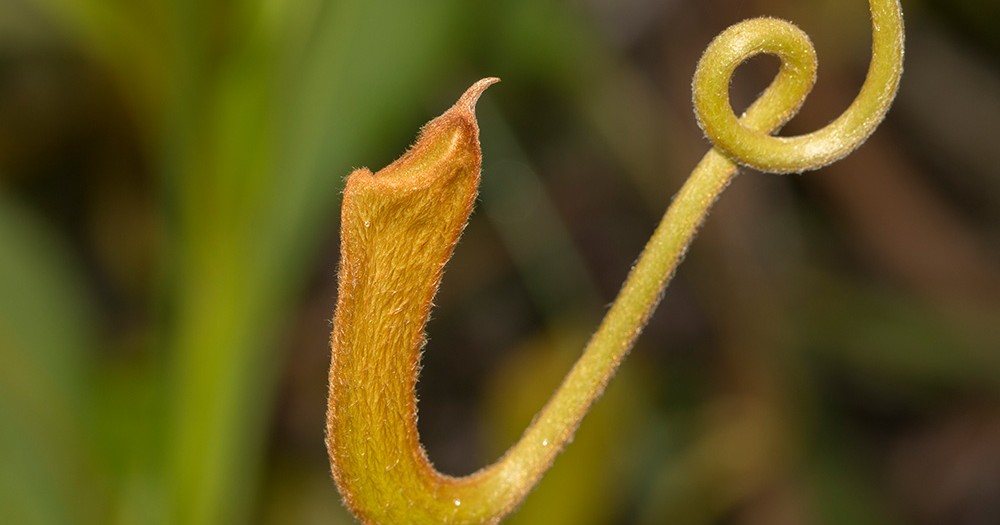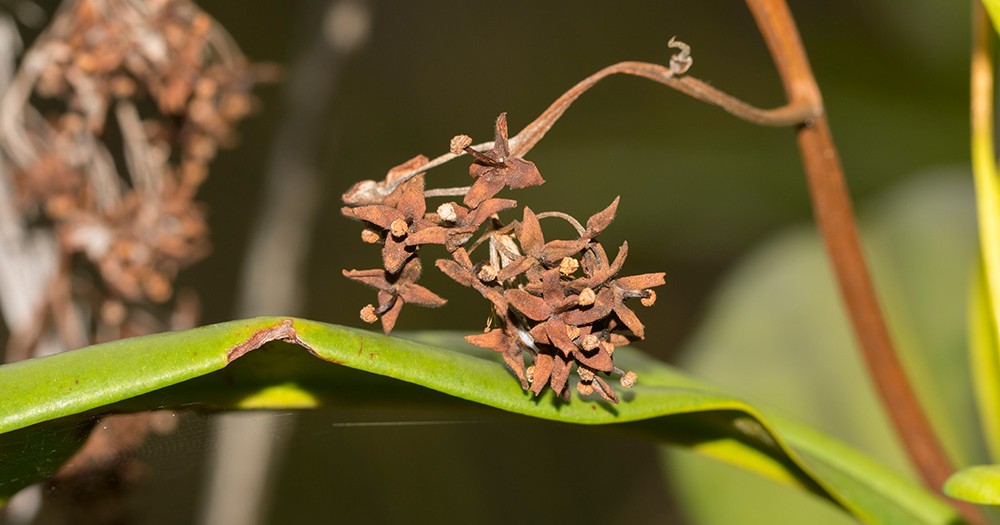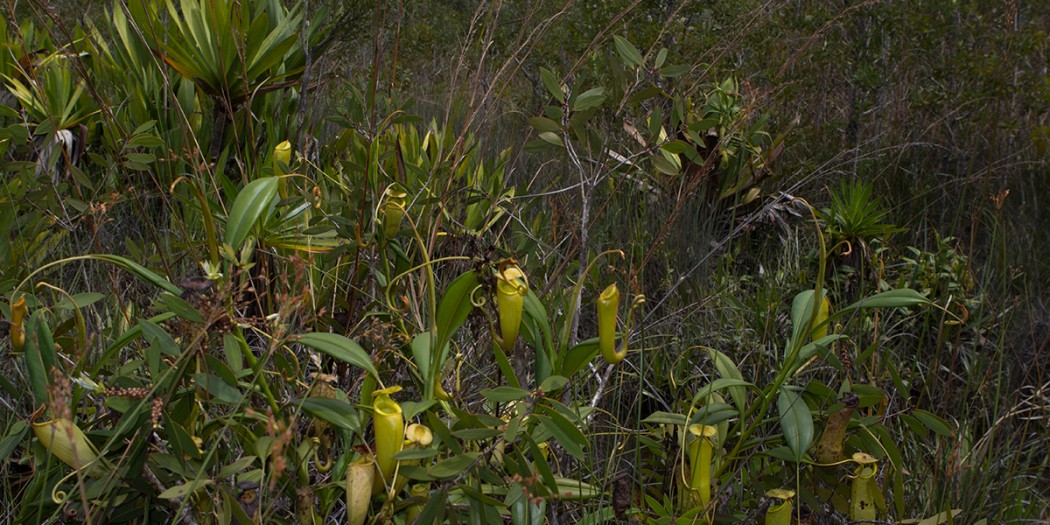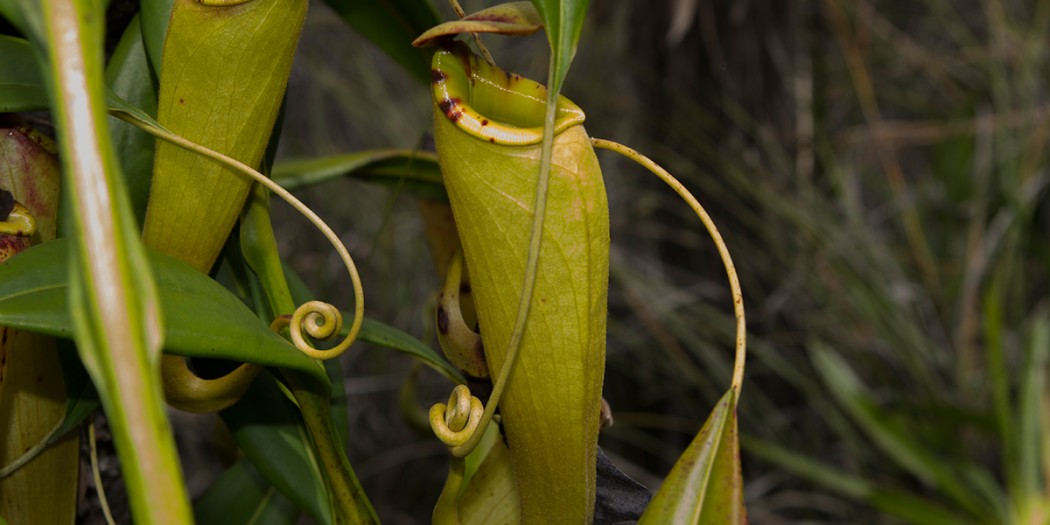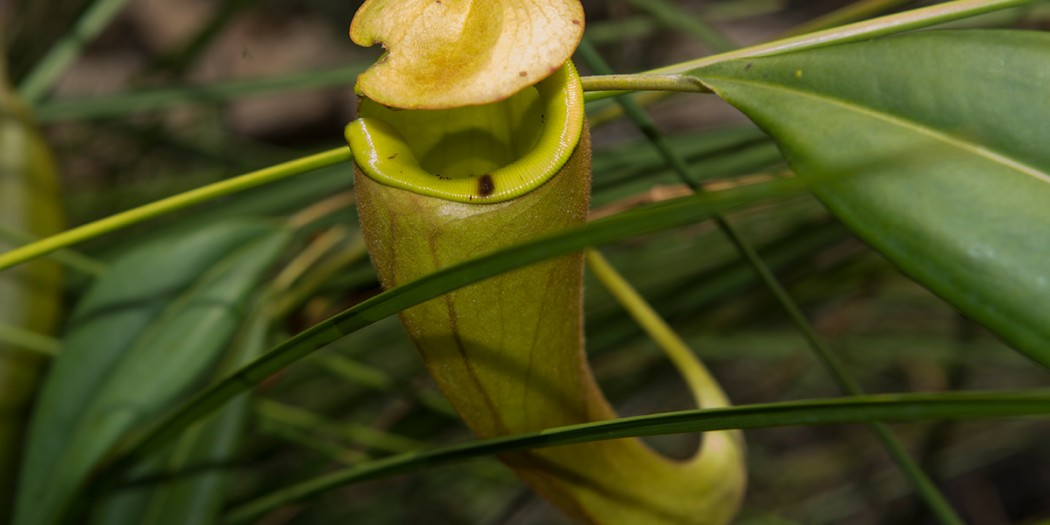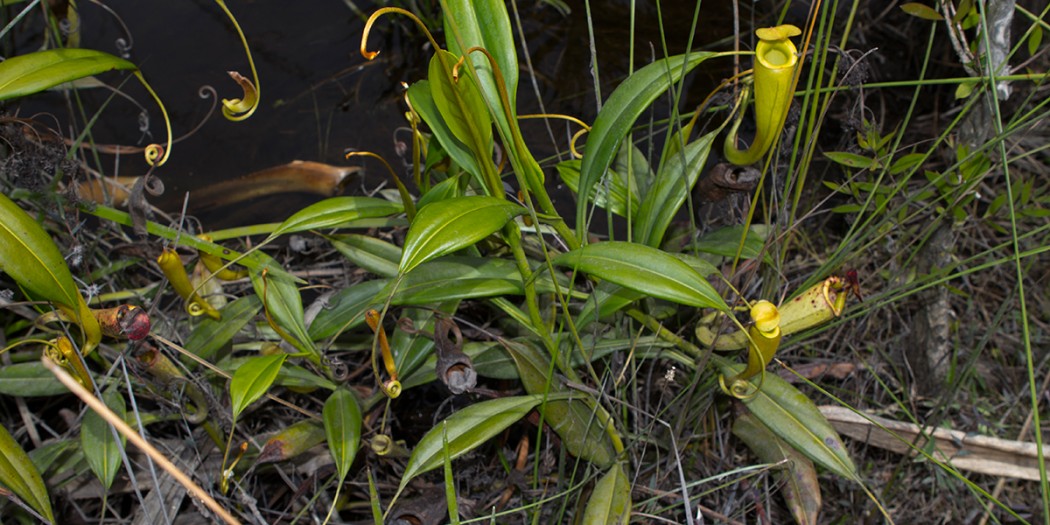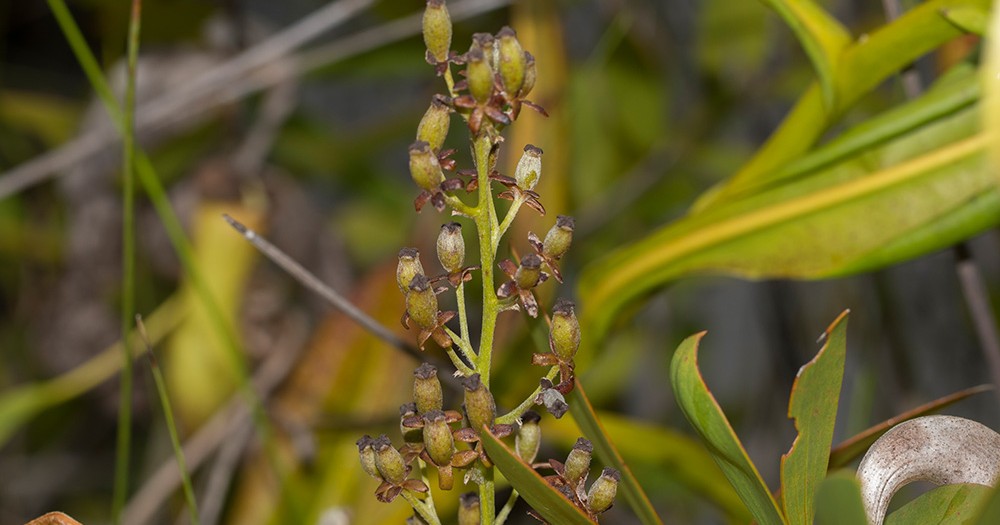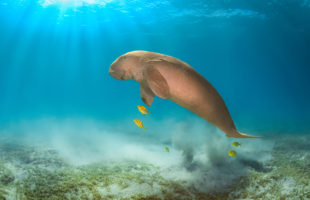Carnivorous plants in Madagascar? Yes, there are! Two species of pitcher plants (Nepenthes madagascariensis and Nepenthes masoalensis) solely exist on the big island. You can find them in open, sunny areas on humid sandy soil along Madagascar’s east coast. In northern direction, they occur until Antongil bay and in southern direction until Tolagnaro (French Fort Dauphin). Mostly, large populations are distributed close to the shore or at least not far away from water – where is one Nepenthes, there are usually a lot. They do not like highlands or mountains, thus you cannot discover them at heights beyond 400 m. Often they grow in company of screw palms (Pandanus ssp.) and the tree of the traveller (Ravenala madagascariensis). The latter are distributed preferably in regions devastated by slash-and-burn agriculture.
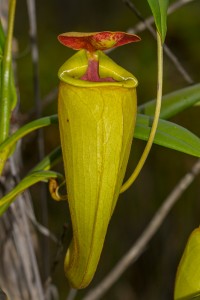
Up to today, comparatively few is known about Malagasy pitcher plants in general. It was not before 1977, that the Swiss biology teacher Dr. Rudolf Schmid-Hollinger described them. In fact, the French gouverneur Etienne de Flacourt had mentioned a pitcher plant in his book about Madagascar in 1661 yet, but he had not described it as a new species.
Pitcher plants owe their name to specially created leaf ends, that indeed look like small pitchers. The pitchers of very long, climbing leaves are more funnel-shaped and turned away from their leaves, in contrast pitchers hanging close to the ground are more bulbous and turn to their leaf. The common name for these different kind of pitcher shapes are trumpet and goblet pitchers. The species which is native to Masoala (N. masoalensis) has more cylindrical shaped pitchers, which makes it – besides locality – easy to differentiate from the second species in Madagascar (N. madagascariensis).
It is exactly these pitchers who make the plant carnivorous: Inside the pitcher, there are small glands producing a sticky fluid. This fluid cumulates at the bottom of the pitcher and is diluted by rain from time to time. Each pitcher has a lid to safe the pitcher from getting to much rain or overflow. To attract insects, the plant uses a variety of tricks: One ist that the pitcher shine red and yellow, perfectly adapted to insects’ vision. Another is that the plants produce nectar right at the edge of the pitchers. Moreover, they have an odor made of alcaloids and essential oils, that attracts insects from far away – and makes them dizzy if staying longer near the pitcher plant.
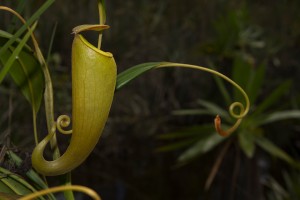
If a fly or an ant visits the pitcher plant, it will become dizzier the longer it eats from the sweet nectar. Some when it will slip on the slippery, rilled edge of the pitcher – it is moistened by glands, producing some kind of aquaplaning for insects – and fall to the depth, where it is digested in the pitcher’s fluid. Malagasy pitcher plants feed on ants at a percentage of 80%, and only a small part consists of flies, beetles, crickets and moths. But why are there plants, which feed on insects at all? The answer is quite simple: Pitcher plants have always been growing on nitrogen-poor ground. They needed to compensate this lack, and discovered insects as a fine source of nitrogen.
At the beginning of the rainy season, male and female pitcher plants wear small, bright flowers. Those grow by the dozens along slim, long stalks, but stay relatively inconspicuously. Insects care for fertilization. Later on, the plants build small, brown seed capsules to ensure their reproduction. By the way, pitcher plants occur mainly in South East Asia (Indonesia, Malaysia, Borneo, Sumatra). One assumes that they came to the island of Madagascar with the first people, because the unremarkable seeds easily stick to clothes and other stuff.
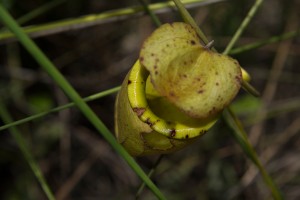
The growing pitcher plants need about nine months to create their first trumpet pitchers. Afterwards, each pitcher forms a small own ecosystem with the surrounding pitcher plants of the area, spending three months with the others and then dries up. Each pitcher has its own personal beneficiaries: Frit flies and ants feed on drowning insects right inside the pitcher. On the plant, small jumping spiders, praying mantis, dragon flies and day geckos catch potential prey. Even inside the actually deadly fluid, there live some animals: Certain mosquito larvae hatch here.
Today, both Malagasy pitcher plants are listed as endangered on IUCN red list of threatened species, although they are distributed in destroyed areas. Due to lack of existing data, you can actually say hardly anything about population size and real risk status. Both species are cultivated by plant lovers all around the world, even though Nepenthes masoalensis occurs mainly in a national park, where any removal is strictly forbidden. Well, of course it is more fun and joy to gaze at these marvelous plants in their natural habitat. In Madagascar.
- Prey composition of the pitcher plant Nepenthes madagascariensis
Scientifical article | Great Britain 2010 | Author: Rembold, Fischer et al - Structure and dynamics in Nepenthes mad. pitcher plant micro-communities
Scientifical article| USA 1996 | Autor: Ratsirarson und Silander - Website of Rudolf Schmid-Hollinger: Seed capsules, pitcher, hairs, flowers and fruits of Nepenthes madagascariensis und Nepenthes masoalensis
 MADAMAGAZINE Your Magazine about Madagascar
MADAMAGAZINE Your Magazine about Madagascar
